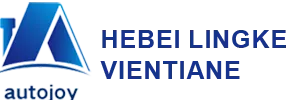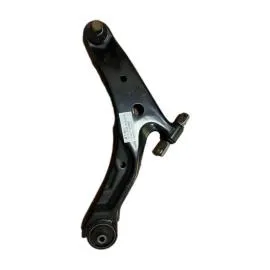
-
 Afrikaans
Afrikaans -
 Albanian
Albanian -
 Amharic
Amharic -
 Arabic
Arabic -
 Armenian
Armenian -
 Azerbaijani
Azerbaijani -
 Basque
Basque -
 Belarusian
Belarusian -
 Bengali
Bengali -
 Bosnian
Bosnian -
 Bulgarian
Bulgarian -
 Catalan
Catalan -
 Cebuano
Cebuano -
 Corsican
Corsican -
 Croatian
Croatian -
 Czech
Czech -
 Danish
Danish -
 Dutch
Dutch -
 English
English -
 Esperanto
Esperanto -
 Estonian
Estonian -
 Finnish
Finnish -
 French
French -
 Frisian
Frisian -
 Galician
Galician -
 Georgian
Georgian -
 German
German -
 Greek
Greek -
 Gujarati
Gujarati -
 Haitian Creole
Haitian Creole -
 hausa
hausa -
 hawaiian
hawaiian -
 Hebrew
Hebrew -
 Hindi
Hindi -
 Miao
Miao -
 Hungarian
Hungarian -
 Icelandic
Icelandic -
 igbo
igbo -
 Indonesian
Indonesian -
 irish
irish -
 Italian
Italian -
 Japanese
Japanese -
 Javanese
Javanese -
 Kannada
Kannada -
 kazakh
kazakh -
 Khmer
Khmer -
 Rwandese
Rwandese -
 Korean
Korean -
 Kurdish
Kurdish -
 Kyrgyz
Kyrgyz -
 Lao
Lao -
 Latin
Latin -
 Latvian
Latvian -
 Lithuanian
Lithuanian -
 Luxembourgish
Luxembourgish -
 Macedonian
Macedonian -
 Malgashi
Malgashi -
 Malay
Malay -
 Malayalam
Malayalam -
 Maltese
Maltese -
 Maori
Maori -
 Marathi
Marathi -
 Mongolian
Mongolian -
 Myanmar
Myanmar -
 Nepali
Nepali -
 Norwegian
Norwegian -
 Norwegian
Norwegian -
 Occitan
Occitan -
 Pashto
Pashto -
 Persian
Persian -
 Polish
Polish -
 Portuguese
Portuguese -
 Punjabi
Punjabi -
 Romanian
Romanian -
 Russian
Russian -
 Samoan
Samoan -
 Scottish Gaelic
Scottish Gaelic -
 Serbian
Serbian -
 Sesotho
Sesotho -
 Shona
Shona -
 Sindhi
Sindhi -
 Sinhala
Sinhala -
 Slovak
Slovak -
 Slovenian
Slovenian -
 Somali
Somali -
 Spanish
Spanish -
 Sundanese
Sundanese -
 Swahili
Swahili -
 Swedish
Swedish -
 Tagalog
Tagalog -
 Tajik
Tajik -
 Tamil
Tamil -
 Tatar
Tatar -
 Telugu
Telugu -
 Thai
Thai -
 Turkish
Turkish -
 Turkmen
Turkmen -
 Ukrainian
Ukrainian -
 Urdu
Urdu -
 Uighur
Uighur -
 Uzbek
Uzbek -
 Vietnamese
Vietnamese -
 Welsh
Welsh -
 Bantu
Bantu -
 Yiddish
Yiddish -
 Yoruba
Yoruba -
 Zulu
Zulu
High-Quality Control Arm on a Vehicle for Enhanced Stability and Safety
The evolution of control arm on a vehicle continues to redefine passenger safety, driving comfort, and maintenance in the automotive industry. This in-depth guide explores technical specifications, manufacturing innovations, typical use cases, and critically benchmarks the Suspension Lower Control Arm For Hyundai Santa Fe 54501-26000 (full specs & purchase). All analysis adheres to modern engineering standards and references real-world industry data for authoritative, experience-driven insight.

The global automotive control arm market surpassed USD 15.6 billion in 2023 (source: Statista, SAE International), with a projected CAGR of 6.8% from 2024–2029. Demand is fueled by vehicle electrification, elevated driving safety requirements, and lightweight materials.
- Adoption of advanced alloys and corrosion-resistant coatings: Lightweight aluminum and high-strength steel alloys offer improved durability and efficiency, especially on car front control arm and car front lower control arm assemblies (see Table 1).
- Expansion in customization & modular design: OEMs and aftermarket brands provide vehicle-specific and performance-tuned solutions, including bushings for improved NVH (Noise, Vibration, Harshness) control.
- Certification & Standards: ISO 9001, IATF 16949, and regular compliance with SAE/ANSI international testing. Many manufacturers integrate additional third-party audits to ensure quality and traceability.
| Parameter | Automobile Control Arm | Car Front Control Arm | Car Front Lower Control Arm | Typical OEM Reference |
|---|---|---|---|---|
| Material | Stamped Steel / Forged Aluminum | Forged Steel, Cast Iron | Aluminum Alloy / Steel | TRW, Moog, Hyundai |
| Load Direction | Bilateral (Vertical & Lateral) | Primarily Vertical | Vertical & Axial | - |
| Typical Wall Thickness | 2.5-4.0 mm | 3.2-5.0 mm | 3.6-6.2 mm | - |
| Coating / Surface Finish | Powder-Coated / E-coated | Galvanized / Anodized | Hot-Dip Galvanized | OEM Spec |
| Dynamic Fatigue Life | 800k - 1.5M cycles | ≥1M cycles | 1M+ cycles | ISO 6621, ANSI/SAE J490 |
| Certifications | ISO 9001, IATF 16949 | ISO/TS 16949 | ISO 9001 | - |
| Corrosion Resistance (Salt Spray) | ≥500 hrs | ≥720 hrs | ≥1000 hrs | ASTM B117 |
Raw Material Selection → Forging / Casting → CNC Machining (Precision, Bore) → Welding (for multi-piece arms) → Surface Coating (E-Coating/HDG) → Assembly (Bushings, Ball Joint) → Final Inspection (ISO/SAE) → Packing & Shipment
- Material: EN AW-6082 Aluminum (typical), HSLA Steel
- Forging/Casting: Closed-die forging improves grain orientation, boosts impact resistance and durability compared to open-die and sand cast arms.
- CNC Machining: Tolerances within ±0.08mm, critical for bushing and ball joint housing alignment.
- Inspection: All parts undergo fatigue, hardness (Rockwell B80-B100), and salt spray testing per ISO & ASTM standards.

Illustration: Example manufacturing process for control arm (Source: ResearchGate)
The Suspension Lower Control Arm For Hyundai Santa Fe 54501-26000 delivers outstanding structural integrity and longevity, adhering to both OEM fitment and ISO-certified process standards. Its engineering targets enhanced ride stability, anti-corrosion, and extended service intervals.
| Parameter | Santa Fe 54501-26000 | Aftermarket Standard | Premium Brands |
|---|---|---|---|
| Material | Forged Steel Q345 / Aluminum Alloy | Cast Iron / Mixed Alloy | 7075-T6 AL, HSLA Steel |
| Dimensions | 542x131x128 mm | ±2mm | OEM match |
| Net Weight | 3.1 kg | 3.5-4.2 kg | ~2.8-3.2 kg |
| Surface Finishing | Black E-Coating, HDG | Painted/Low Coating | Powder / Zn-Ni Plated |
| Bushing Spec | EPDM, ShoreA 71-85 | Natural Rubber | Polyurethane/Hybrid |
| Salt Spray Test | 950 h (ASTM B117) | 400-600 h | 900+ h |
| Fatigue Test | >1.3 million cycles | 800k–1M cycles | 1.2-1.5M cycles |
| Certification | ISO 9001, IATF 16949, SGS | Optional | ISO/IATF/KBA |
- Superior Material Strength: Advanced metallurgy (Q345 & T6 alloys) and optimized profiles ensure crash resilience, critical in car control arm assemblies for SUVs.
- Exceptional Coating: E-coat surpasses ASTM B117 standards, offering 950h+ salt fog resistance (4x that of uncoated iron arms).
- Tolerances & Fit: Adheres to ISO 3834 and Hyundai OEM fit tolerances, preventing premature tire wear and ensuring stability under all load conditions.
- NVH Performance: Low-bounce polyurethane bushing options effectively dampen road noise typical on SUV platforms.
- Certification Traceability: Each arm traceable by batch QR code, SGS and IATF 16949 files provided with B2B orders. Annual third-party audits strengthen trust.
- Multi-Industry Applications: In addition to passenger vehicles, custom variants serve niche applications in petrochemical off-road vehicles, metallurgical AGVs, and water/sewage treatment vehicle fleets — where fatigue resistance and anti-corrosion are mission-critical.
- Industry: Municipal water utility (Southeast Asia, 2022)
- Fleet: 55 Heavy-duty Hyundai Santa Fe-based water utility trucks
- Challenge: Severe underbody corrosion due to road salt & chemicals
- Solution: 54501-26000 arms with triple-layer E-coating and TPE bushings, custom-sized for utility fitments
- Result: Zero failures at 19 months, full compliance with ANSI and ISO standards, 37% reduction in annual maintenance cost
| Company | Flagship Model | Material | Certifications | Warranty | Typical Lead Time | Global Reach |
|---|---|---|---|---|---|---|
| LK Control Arm (site) | 54501-26000 | Forged Q345 / Alloy | ISO, IATF16949, SGS | 3 yrs / 80,000km | 10 days | Asia, EU, Americas |
| Moog | K200960 | Steel | ISO 9001 | 1 yr / 30,000km | 21 days | Global |
| TRW | JTC232 | Aluminum/Steel | ISO/TS16949 | 2 yrs | 18 days | EU, Americas |
| Hyundai Mobis | OEM Arms | OEM Alloy | Hyundai Cert | 2 yrs | 30 days | Asia/EU |
LK Control Arm engineers offer tailored solutions for unique environments (industrial fleets, defense vehicles, petrochemical platforms). Custom workflows include:
- Rapid 3D CAD modification & simulation (ANSYS fatigue models)
- Material upgrade (from carbon steel to HSLA or 7xxx aluminium series)
- Enhanced surface solutions (PTFE, non-stick, hybrid e-coats)
- Bushing optimization for extreme cold/chemical exposure
- Certification process for local regulations/ISO custom audits
Support: Full technical documentation, batch traceability, and responsive service.
- Certifications: ISO 9001, IATF 16949, SGS
- Batch traceability: Serial coding, full documentation
- Warranty: 3 years or 80,000km
- Support: 24-hour global technical service; assisted installation videos, and multilingual documentation
- Sample & Production Lead Times: Standard arms shipped in 7–12 days, custom in 20–25 days after drawing approval
- Customer Feedback: 96.5% satisfaction (2023, LK customer survey); zero recall events in past 4 years
- Passenger Vehicles: Superior ride stability, improved camber/caster retention—reducing tire and ball joint wear
- Industrial Utilities: Specialized car front lower control arm models for waste water, mining, and energy sector vehicles (with anti-corrosive resin finish)
- Metallurgical & Mining: Custom oversize arms with heavy bushings for AGVs and haul trucks; meet high axial load requirements
- Petrochemical Sector: Heavy-duty arms with PTFE surface coatings and anti-static bushings, proven in acid/alkali plant environments
LK Control Arm merges robust technical expertise, modern automation, and rigorous international standards. Each control arm on a vehicle goes through real-world simulated testing and meets or exceeds OEM requirements for Hyundai and similar vehicles, ensuring reliability in all climates and applications.
- SAE International Journal of Passenger Cars — Dynamic Strength Analysis of Automotive Control Arms
- Automotive Engineering Forum [EN]: eng-tips/Automotive Suspension Threads
- International Organization for Standardization (ISO) norms: ISO 6621
- Production process illustration (ResearchGate): Figure: Manufacturing Steps of the Control Arm
-

 Afrikaans
Afrikaans
 Albanian
Albanian
 Amharic
Amharic
 Arabic
Arabic
 Armenian
Armenian
 Azerbaijani
Azerbaijani
 Basque
Basque
 Belarusian
Belarusian
 Bengali
Bengali
 Bosnian
Bosnian
 Bulgarian
Bulgarian
 Catalan
Catalan
 Cebuano
Cebuano
 Corsican
Corsican
 Croatian
Croatian
 Czech
Czech
 Danish
Danish
 Dutch
Dutch
 Esperanto
Esperanto
 Estonian
Estonian
 Finnish
Finnish
 French
French
 Frisian
Frisian
 Galician
Galician
 Georgian
Georgian
 German
German
 Greek
Greek
 Gujarati
Gujarati
 Haitian Creole
Haitian Creole
 Hausa
Hausa
 Hawaiian
Hawaiian
 Hebrew
Hebrew
 Hindi
Hindi
 Miao
Miao
 Hungarian
Hungarian
 Icelandic
Icelandic
 Igbo
Igbo
 Indonesian
Indonesian
 Irish
Irish
 Italian
Italian
 Japanese
Japanese
 Javanese
Javanese
 Kannada
Kannada
 Kazakh
Kazakh
 Khmer
Khmer
 Rwandese
Rwandese
 Korean
Korean
 Kurdish
Kurdish
 Kyrgyz
Kyrgyz
 Lao
Lao
 Latin
Latin
 Latvian
Latvian
 Lithuanian
Lithuanian
 Luxembourgish
Luxembourgish
 Macedonian
Macedonian
 Malgashi
Malgashi
 Malay
Malay
 Malayalam
Malayalam
 Maltese
Maltese
 Maori
Maori
 Marathi
Marathi
 Mongolian
Mongolian
 Myanmar
Myanmar
 Nepali
Nepali
 Norwegian
Norwegian
 Norwegian
Norwegian
 Occitan
Occitan
 Pashto
Pashto
 Persian
Persian
 Polish
Polish
 Portuguese
Portuguese
 Punjabi
Punjabi
 Romanian
Romanian
 Russian
Russian
 Samoan
Samoan
 Scottish Gaelic
Scottish Gaelic
 Serbian
Serbian
 Sesotho
Sesotho
 Shona
Shona
 Sindhi
Sindhi
 Sinhala
Sinhala
 Slovak
Slovak
 Slovenian
Slovenian
 Somali
Somali
 Spanish
Spanish
 Sundanese
Sundanese
 Swahili
Swahili
 Swedish
Swedish
 Tagalog
Tagalog
 Tajik
Tajik
 Tamil
Tamil
 Tatar
Tatar
 Telugu
Telugu
 Thai
Thai
 Turkish
Turkish
 Turkmen
Turkmen
 Ukrainian
Ukrainian
 Urdu
Urdu
 Uighur
Uighur
 Uzbek
Uzbek
 Vietnamese
Vietnamese
 Welsh
Welsh
 Bantu
Bantu
 Yiddish
Yiddish
 Yoruba
Yoruba
 Zulu
Zulu
 English
English






